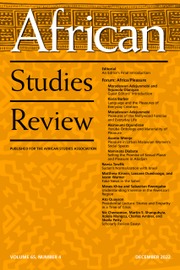Set against the backdrop of Ottoman Cairo—a city at once bewilderingly cosmopolitan and also suspicious of its religious minorities—Paul Love’s Ottoman Ibadis of Cairo offers a refreshingly compact case study of three centuries of Maghribi Ibadis who crisscrossed the city’s networks of business, study, and reform. Ibadis distinguish themselves historically and theologically from the larger and better-known Sunni and Shi’a branches of Islam and constitute majority populations only in parts of North Africa and southeast Arabia. Love’s work, which claims that Ibadis were “hidden in plain sight,” comes as a welcome addition to a burgeoning literature that challenges the narrative of Ottoman “decline” by reexamining how the empire’s minority communities knit together far-flung cultural and commercial hubs.
The conceptual anchor of the book is the Wikālat al-Jāmūs, or “Buffalo Agency.” Endowed (waqafa) in the 1620s as a residence and trade agency by ʿAbd al-Aziz al-Bahhar, the Wikālat played host to a stream of Ibadi pilgrims, merchants, and scholars who came for varying durations and often returned to the Maghrib. Although the Buffalo Agency itself was demolished in the 1960s, a series of marginal references to the building in Love’s earlier research on North African Ibadi communities revealed that generations of Jerbans and the Mzabis had stayed in the same Tulun neighborhood and often crossed paths and knew one another. Love’s excavation of the documentary remains of the Buffalo Agency fills an important lacuna in the English-language literature on Ibadism, which tends to focus either on the early period or Ibadi intellectuals’ engagement with nineteenth-century reform movements. A variety of fragmentary sources—court records, contemporaneous building plans, and documents from the agency’s library—were necessary to piece together the story of the agency, but the author also transparently relies on Arabic scholarship such as that of Salim b. Muhammad b. Ya’qub and ʿAbd al-Rahīm A. ʿAbd al-Rahīm, which has long connected Maghribi and Omani branches of Ibadism through the transit point of Egypt.
Each chapter of the volume follows the Buffalo Agency through a period of transition in its residents and activities. Chapters One and Two explain the legal, economic, and political contexts that encouraged numbers of North African Ibadis, including the agency’s founder al-Bahhar and renowned Ibadi scholar Muhammad Abī Sitta, to migrate to Cairo in the early 1600s. Chapter Three examines several waqf (Islamic charitable endowment) deeds to “reflect the interrelationship between Ibadi merchants” enriched by Cairo’s coffee trade and “the Ibadi students and scholars who made use of” books purchased for the agency’s library at its height in the eighteenth century. Chapters Four and Five explore the Buffalo Agency’s adaptation to nineteenth-century political and intellectual changes, following the careers of Saʿīd al-Bārūnī, his student Muhammad al-Bārūnī, and the powerful Saʿīd al-Shammākhī to understand how the agency acted as a crucial intermediary between Ibadis and the wider Ottoman world, and also strengthen scholarly bonds between distant Ibadi communities in the Maghrib and Oman. As the agency fell into disuse alongside the decline of al-Azhar, the book ends with an extended reflection on the work of Salim b. Yaʿqub, who stayed at the Buffalo Agency in the 1930s and worked to compile its history and salvage as much of its library as possible.
The unique value of Love’s contribution in Ottoman Ibadis of Cairo lies in his claim that Maghribi Ibadis were “hidden in plain sight.” (3) On one hand, the vivid picture he paints of the ordinary life of merchants donating books and young scholars studying at Azhar gives the reader a feel for how Ibadis sustained Ibadism through life together at the wikālat. At the same time, however, he argues that Ibadis inhabited a unique middle ground; they were a suspect religious minority, but as Muslims were nevertheless able to participate fully in Ottoman legal and social structures in ways inaccessible to Jews, Christians, and others. By using the Ottoman court system, attending al-Azhar (Sunnism’s most famed institution of learning) and participating enthusiastically in Mediterranean trade networks, Love argues that “the Ibadis of Cairo should be understood as Ottomans. They were not outsiders who existed on the margins of empire,” but functioned in many of “the same ways as their non-Ibadi contemporaries did” (15).
This act of demarginalization is a consistent and useful refrain in Love’s work and suggests avenues for further research in other parts of the Ibadi world. It simultaneously, however, leaves lingering questions about what precisely Ibadism meant and how it functioned for Maghribis. It is not always clear, for instance, whether networks of support were primarily local (Jerban) or confessional (Ibadi), since litigants in court cases were identified by place of origin, not sect. Admittedly, this ambiguity may be intentional; Love provocatively uses James Baldwin’s concept of “forum shopping” (identifying the legal forum from which a litigant can derive the greatest benefit, not the one with greatest fidelity to one’s madhhab) to suggest how ordinary Maghribis used systems and identities in ways that were most useful to them (62–63). This tension in the book is a productive one, and Ottoman Ibadis offers a vivid, compelling, and readable narrative that goes a good way to bridging gaps in the current literature on Ibadism that will be welcomed by many scholars working on North and East Africa.


